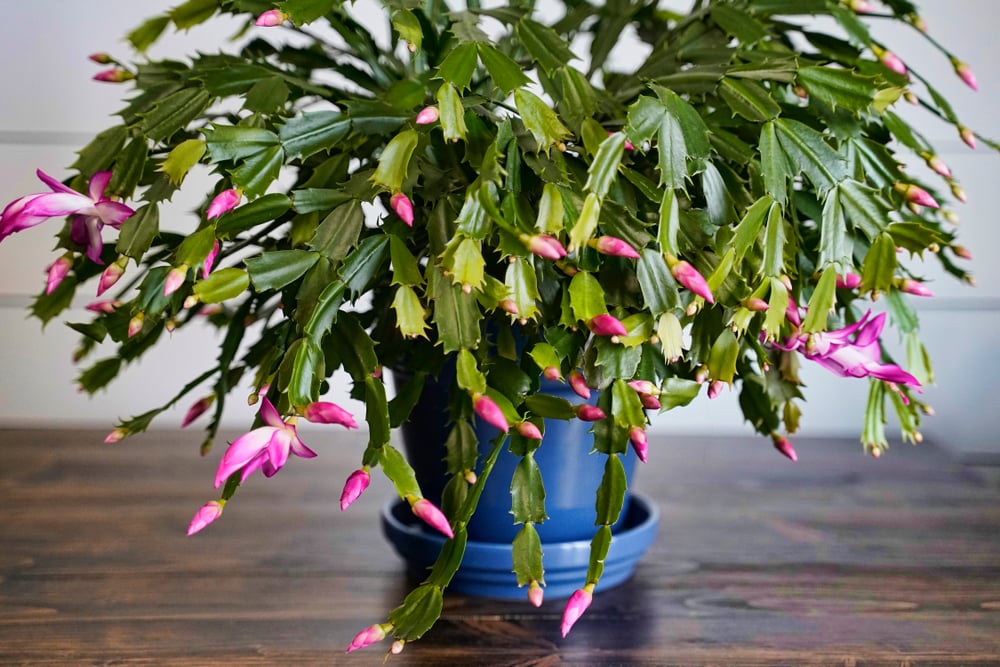How To Grow a Healthy Medlar Fruit Tree
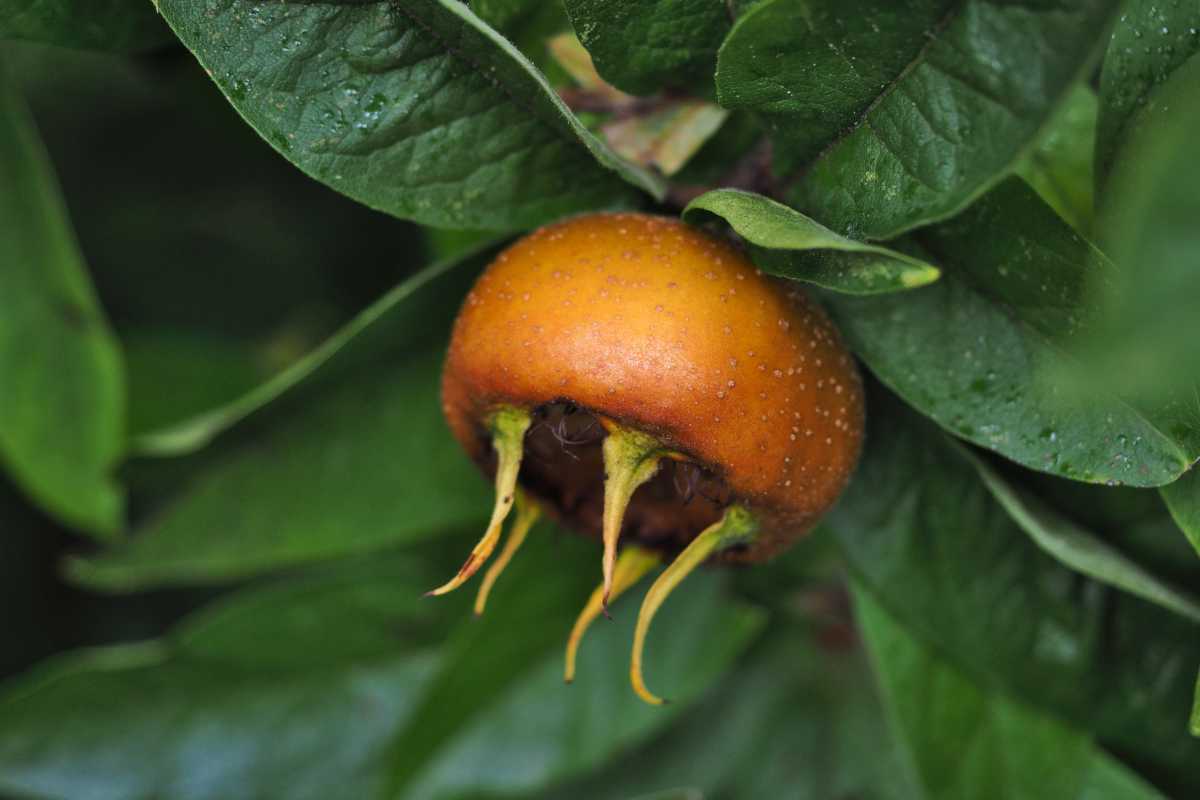
Table of Contents
The Medlar tree was a famous fruit tree in Britain a few centuries ago. The tree fell out of favour due to its fruit’s appearance being nicknamed open-arse and monkey’s bottom in southwest England. During medieval times, the fruit was a popular sweet treat in the winters before sugar arrived on the scene.
The fruits get picked in autumn when it is still unripe, hard, and bitter; they are stored for several weeks until they blet or ripen, going from golden brown to dark brown. The Medlar is easy to grow, especially in smaller gardens, and usually problem-free, needing little pruning. Even with all of these accolades, most people in the UK have even heard or tried it.
In this article, you will learn about the medlar fruit tree, how to grow it, how to take care of the tree, what common problems you might face, and other essential things.
About The Medlar Tree
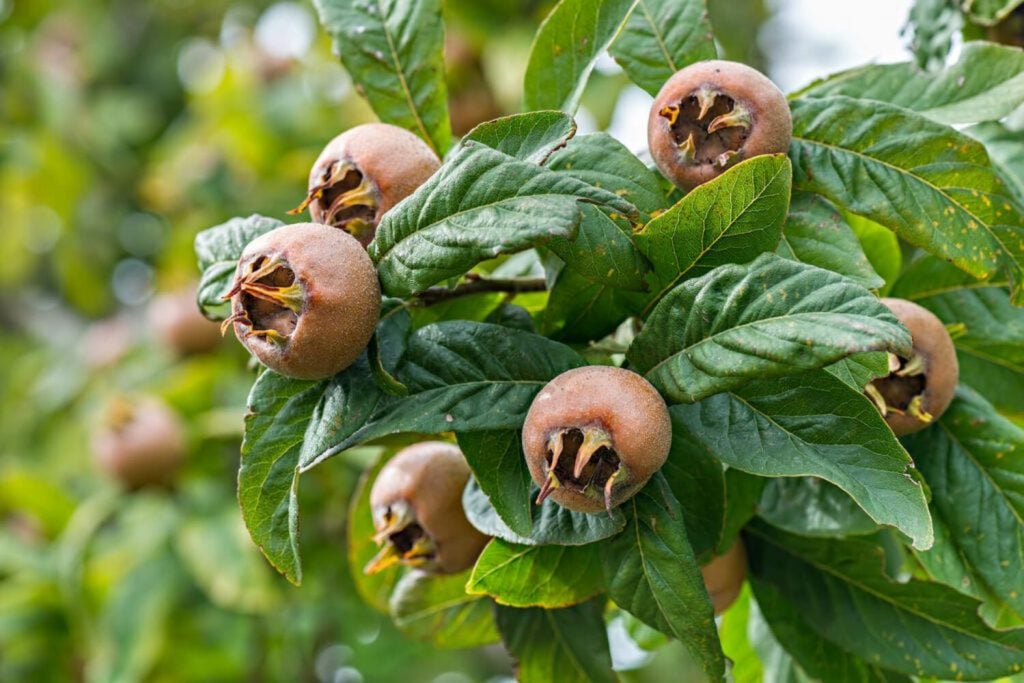
The Medlar is a spinous tree belonging to the Rosaceae family or rose family. The tree is native to Europe, from southward of the Netherlands to southwestern Asia. The medlar can be grown as a tree or a shrub. The edible fruit has a delicious but acquired taste while being rich in vitamins; it tastes a little like a quince. Medlar has been cultivated since Roman times, and the fruits can be eaten after bletting in winter; you can enjoy these fruits raw or cooked in several dishes. You can even make medlar jelly after harvesting the fruits.
A Brief Overview of Medlar
- Scientific Name – Mespilus germanica
- Common Name – Common Medlar or Medlar
- Plant Type – Fruit tree or shrub
- Hardiness – H6
- Native – Europe and Asia
- Height – 4 – 8 m
- Spread – 4 – 8 m
- Sunlight – Full sun
How to Grow a Medlar Fruit Tree
You should grow medlar trees because they are a novelty; you won’t find them in grocery stores or market stalls. You will have the opportunity to grow a unique tree and feast on the sweet fruits. There are wide varieties to pick from; some give smaller fruits, larger fruits, or nicer flavoured fruits. Since medlar trees are self-pollinating, you only need to buy a tree for good crop growth.
1. How to Sow Medlar

You must sow medlar seeds in the early spring and begin with small pots. The soil must be moist, and the plant must be kept in a dark and cool spot. The seeds need around five weeks to germinate and be hardened off before you start planting out.
2. When to Start Planting Out
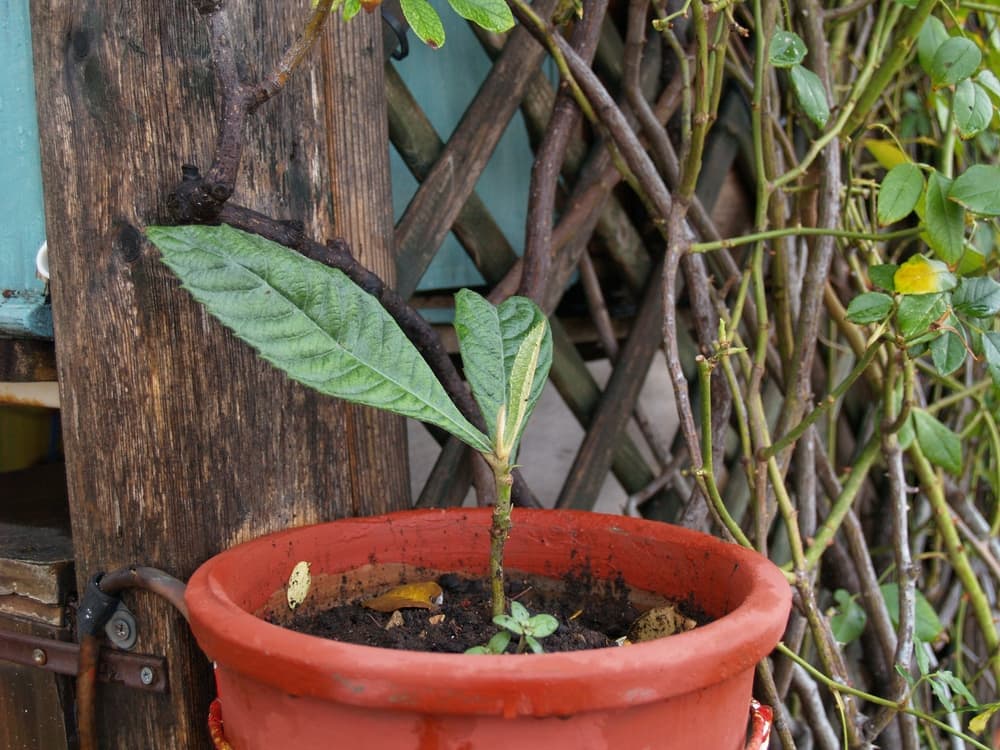
You can purchase medlar as a shrub if you want to avoid growing your medlar plant from seeds. Plant the medlar between November and March, and make sure to plant a stake, supporting the young tree for the first three or four years or so of its life. You can even plant it in a pot or container as long as it is a big one giving the plant plenty of space to grow.
Young medlar plants are sold as bare-root or containerised trees. For immediate planting, bare-root are dormant plants from late autumn to early spring. The containerised ones can be planted all year round, but winter is the preferable time.
3. Where to Plant Medlar
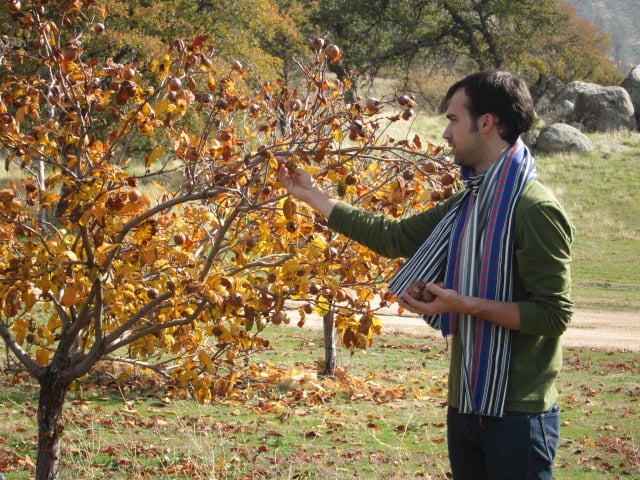
The spot you choose to plant your medlar should have deep and fertile soil; good drainage is also required for good growth. Full sun is preferred, but partial shade will also work for medlar trees. The spot should not have strong winds or late frosts since the medlar’s leaves and blooms can easily be damaged.
4. When to Plant Medlar Fruit Tree
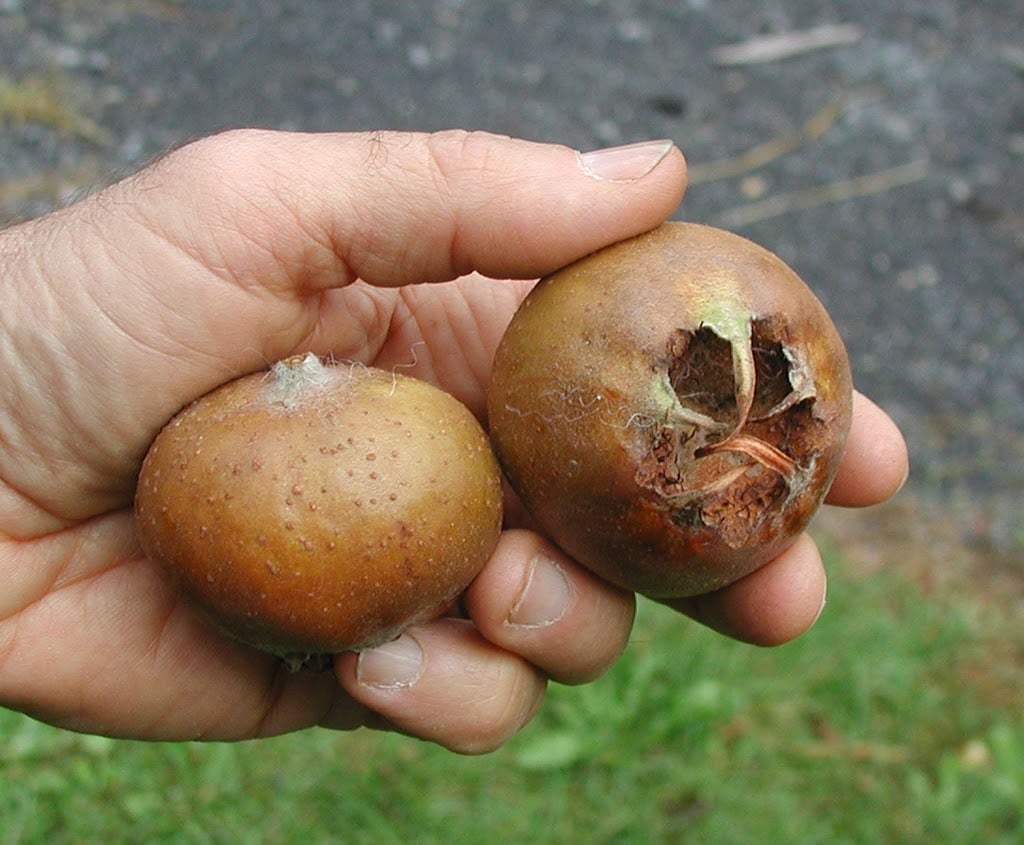
Since they are dormant, you should plant your medlar trees from autumn to spring. If you bought medlar trees in containers, they can be planted other times but avoid hot and dry weather. Give your tree a good and thorough watering before planting.
5. Which Fertiliser to Use
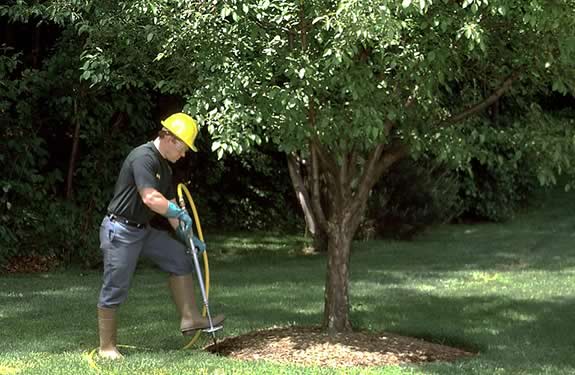
At the plant’s base, mulch the spot and ensure the soil is sufficiently fed. Each spring, add some high-potassium fertiliser; the rule is to add one handful for each metre of the medlar’s soil surface. If your medlar is planted in grass, then a handful and a half will work.
6. How Much to Water Medlar
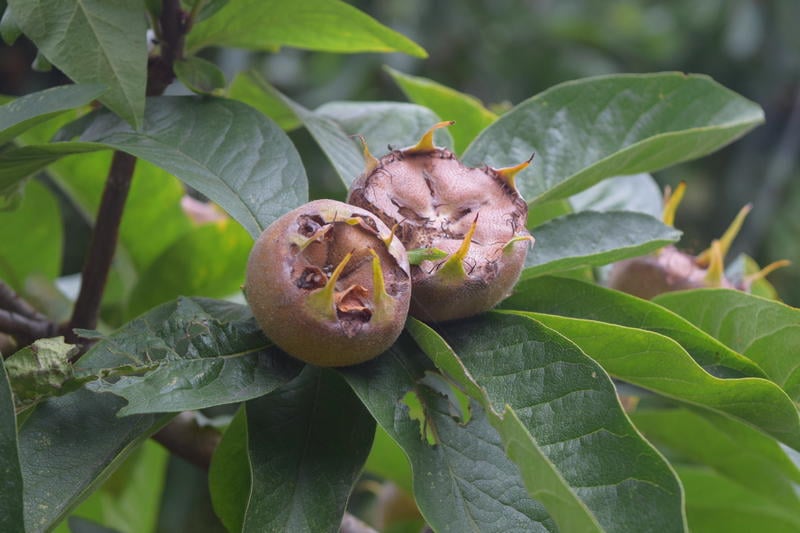
Pay extra attention to the plant during the first four years. Keep your plant well watered, especially during dry patches in this time period. This is done because medlar trees are not too thirsty, except during dry spells. Water the established trees in prolonged dry spells, significantly when the fruits are growing.
7. How Much to Prune Medlar
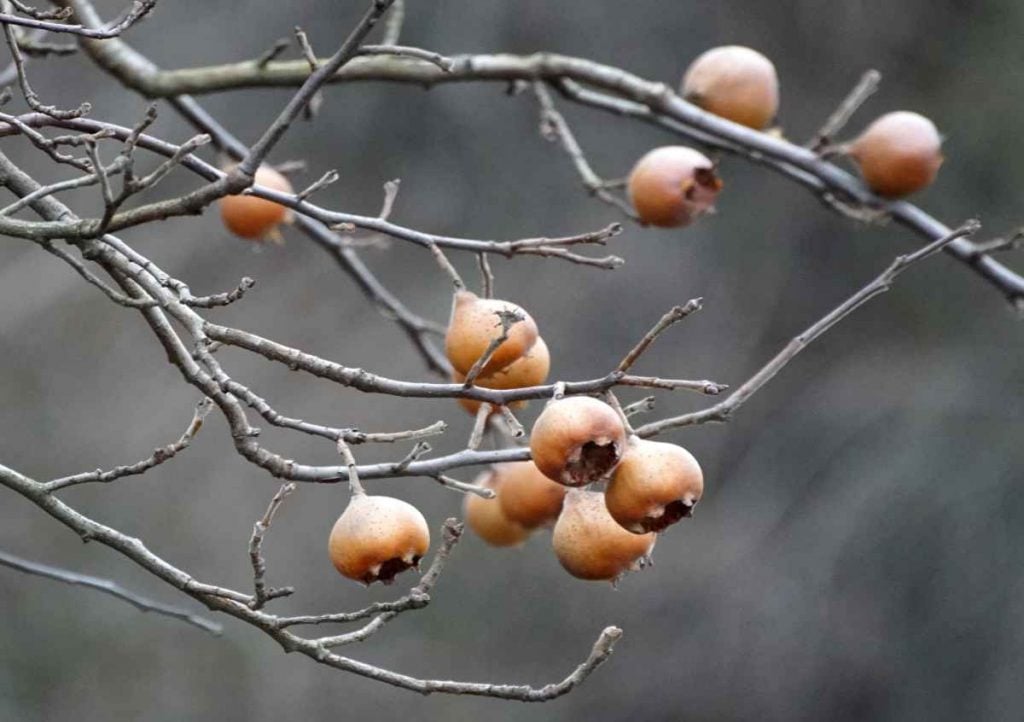
You should prune the dead or weak branches in winter since the leaves have already fallen. The medlar tree should have a balanced branch system for good fruiting and preventing any problems in the tree’s later years. Prune young medlar trees like you would do apple and pear trees.
8. When to Harvest Medlar Fruits

It takes three to five years of growing before medlar trees bear fruits. Harvesting should be done in October and November once your tree is bearing fruits. The fruits must be unripe, bitter, and hard when picked; store them so that they can blet or ripen. During the bletting process, the starches turn into sugars while the acids and tannins reduce. The favours improve, and the fruits start looking brown and rotten, but it is not rotten. In fact, they become sweet, delicious, and aromatic.
9. Bletting the Fruits
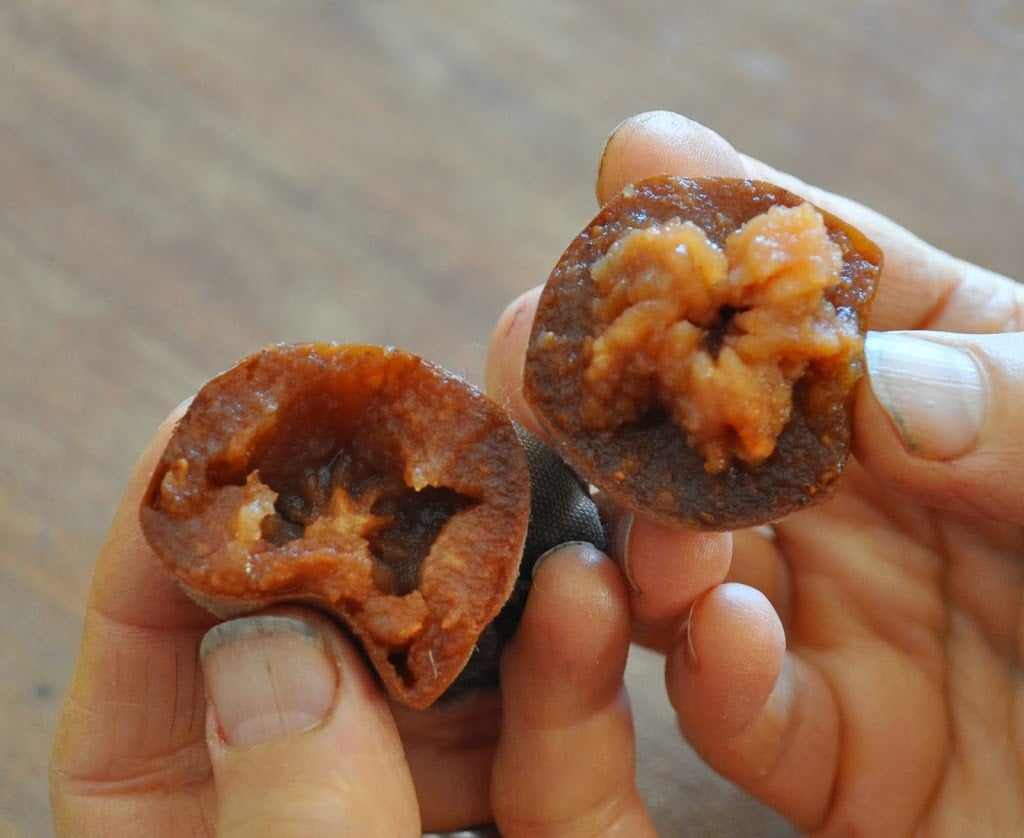
For bletting the fruits, dip the medlar stalks in a robust salt solution to avoid rotting. Keep the fruits on trays or straws in a cool place; ensure no frost is in the area. The stalks need to be facing upward and not touching each other. After two to three weeks, they will be soft, their colour will be brown, and they will look a bit wrinkled. During these weeks, keep checking on them until they are sweet and aromatic. The flesh should look like dark apple sauce and a little bit like dates or apricots. Since the leathery skin should not be eaten, take out the soft flesh, and the large seeds must be removed.
You can use bletted medlar to make jelly which can be used in desserts and with meats. Or even eaten raw with cheese and port. Eat medlar fruits straight away or freeze them for future use.
9. Common Problems for Medlar Fruit Trees
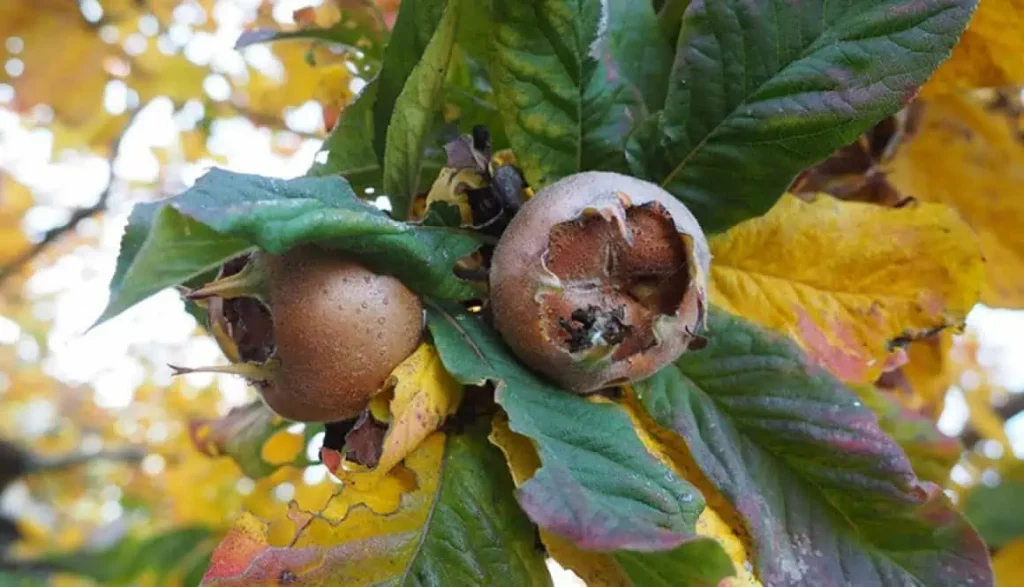
Medlar trees are straightforward to grow and hardy, but there are a few problems to look out for. Winter moth caterpillars like to eat medlar leaves, so keep an eye out for them and remove them as soon as possible. Aphids can also cause problems for your medlar, so clear out any aphid colonies. For fireblight issues, prune any infected parts and disinfect your pruning tools between the cuts to stop the infection from spreading.
Gardening Tools Needed for Medlar Trees
Make sure you have the important tools before planting medlar in your garden. Medlar seeds will help get your journey started.
- Plant World Seeds – Medlar Seeds
- Genipap 5 Japanese Medlar Fruit Seeds
- Genipap 70pcs Medlar Showy Mespilus Fruit Seeds
- Zumari 70pcs Medlar Showy Mespilus Fruit Seeds
Young medlar fruit plants are also an option for you.
- Medlar Fruit Tree Dwarf Patio Tree for Garden
- Medlar ‘Nottingham’ 3-4ft Tree, in 6L Pot
- Medlar Nottingham Fruit Tree UK Hardy 5-6ft Tall
- Thompson & Morgan Hardy Crab Medlar Fruit Tree
Fertiliser rich in potassium will help grow your medlar plants.
- Miracle-gro All Purpose Soluble Plant Food
- Miracle-Gro Performance Organics Granular Plant Food
- Gro Organic Top Soil Fertiliser
- Vitax Q4 Fertiliser,4.5kg
Gardening tools make sure your garden stays beautiful.
- COVACURE Garden Tools Set, 11 PCS Aluminum Alloy Steel Hand Tool
- Bokhot Garden Tools Set Gardening Hand Tool Gift Kit
- LBSTP Gardening Hand Tool Gift Kit Gardening Gifts for Women & Men
- DEWINNER Garden Tool Set, Hand Tool Gift Kit
Summing Up
All in all, medlar plants are a unique choice for your garden, but you will be satisfied. It is said that people have been cultivating this tree for as long as 3,000 years. The Greek naturalist and philosopher Theophrastus mentioned medlar trees in 300 BCE, and it is believed that medlar came to Britain in the Roman period. Unfortunately, the British had come up with cruel names for medlar fruits, which you can see in the works of Chaucer and Shakespeare.
Medlar fruit trees will give you beautiful blooms, unique fruit, and gorgeous colour in modern times. They tolerate most soils, so growing them in most of the UK region will not cause any problems. The medlar fruits are rich in vitamins and sweet to taste. Grown from seeds or younglings, you can easily grow medlar trees in your garden, even small ones. Once bearing fruits, you can harvest and blet them before enjoying the fruits of your labour. Add medlar fruits into meat dishes, turn them into jelly or medlar cheese, or eat them raw with cheese and wine; this tree is highly versatile.
Make sure to jot down your experiences with medlar tree planting in the comments below.

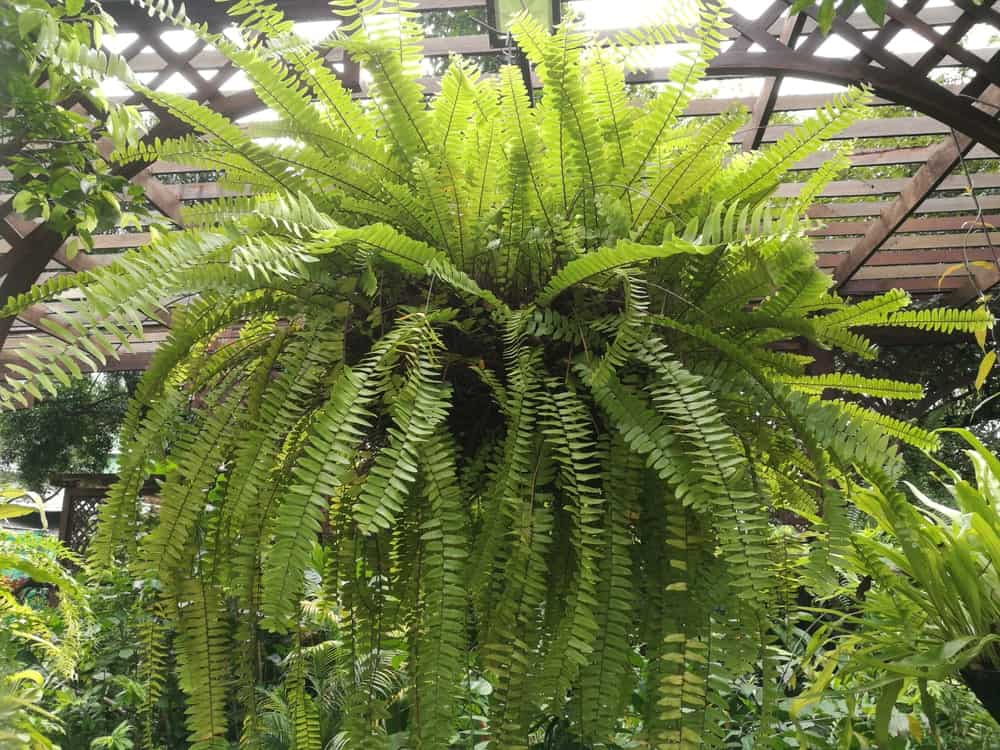
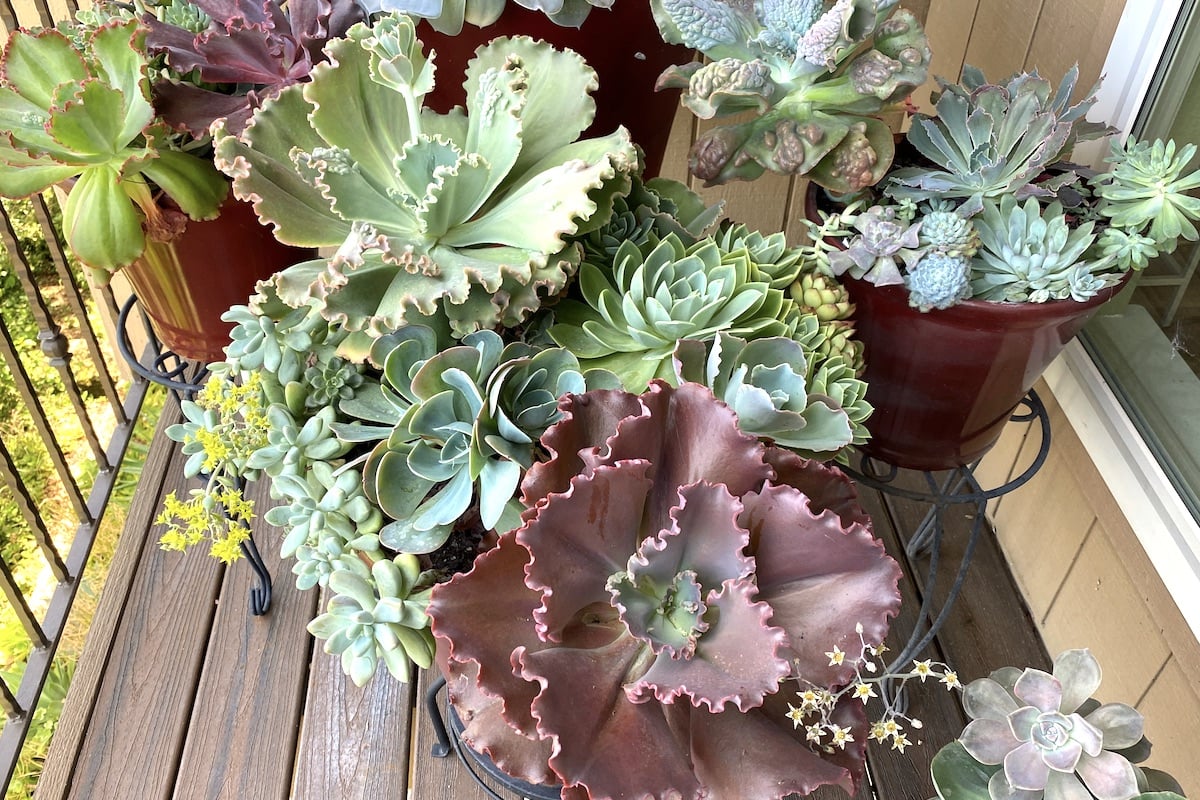

![How to Grow and Care Bougainvillea Plant [UK]](https://staging.thearches.co.uk/wp-content/uploads/Bougainvillea-Plant-Care-Growing-Tips-1.jpg)

